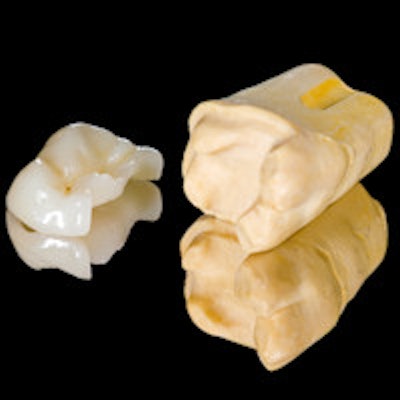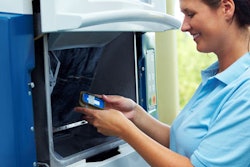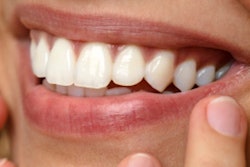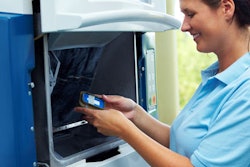
For tooth-colored CAD/CAM inlay restorations, practitioners are faced with the decision on what material to use. A new study from Dental Materials reports that unfilled polymer CAD/CAM inlays luted with self-adhesive resin cement may work as long-term restorations, with a provision that the cavities are narrow.
In this study of these inlays, European researchers sought to evaluate marginal adaptation, fracture load, and failure types. The authors acknowledged there is an ongoing search for materials with "higher fracture resistance" (Dent Mater, December 23, 2015).
"To the best of our knowledge, at present, there is no information available on the fracture load of molars restored with adhesively luted PMMA-based CAD/CAM inlays," wrote the authors, led by Dr. Andreas Ender, an assistant professor at the University of Zurich Center of Dental Medicine.
Chewing fatigue
Since the introduction of the first clinically applicable CAD/CAM system in 1985, practitioners have debated whether polymer or ceramic material is the best for restorations for patients with large mesio-occlusal-distal cavities.
As composite and polymethyl methacrylate (PMMA) blocks have been introduced for CAD/CAM dental reconstructions as an alternative to aesthetic silicate ceramics, researchers wanted to assess how PMMA-based CAD/CAM fabricated inlays perform in these cavities with respect to marginal adaptation and mechanical stabilization of the restored tooth. The researchers tested the restorations to a chewing fatigue and subsequent loading to fracture tests.
The study included 48 extracted, caries-free molars. The teeth were randomly assigned to one of four groups (12 teeth in each group):
- Positive control group (PCG) consisting of teeth restored with glass-ceramic CAD/CAM inlays (Empress CAD, Ivoclar Vivadent) luted using a conventional resin cement (Variolink II, Ivoclar Vivadent)
- TRX group consisting of teeth restored with unfilled PMMA-based CAD/CAMinlays (artBloc Temp, Merz Dental) luted using a self-adhesive resin cement (RelyX Unicem, 3M ESPE)
- TAC group consisting of teeth restored with unfilled PMMA-based CAD/CAMinlays (artBloc Temp) luted using a conventional resin cement (artCem GI, Merz Dental)
- Negative control group (NCG) of teeth directly filled with resin-based composite (Filtek Supreme XT, 3M ESPE)
The NCG teeth received a 0.5-mm enamel bevel and were filled with resin-based composite using an incremental filling technique. For manufacturing of the CAD/CAM inlays, the teeth were scanned with a Cerec 3D camera (Sirona). The inlays were designed by CAD/CAM software (inLab 3D, Version 3.65, Sirona) and milled (InLabMC XL, Sirona).
The researchers used a chewing simulator on all the molars to measure chewing fatigue. Marginal adaptation was measured at two interfaces, between dental hard tissues and luting cement and between luting cement and restoration, both before and after the chewing simulator test. The chewing fatigue test was performed using a custom-made simulator and mechanically loaded 1.2 million times at a force of 49 N and frequency of 1.67 Hz.
The researchers next determined the fracture loads and failure types. The data were analyzed using three- and one-way analysis of variance (ANOVA) with post-hoc Scheffé test and two sample student's t-test (p < 0.05).
The researchers reported both before and after chewing fatigue, marginal adaptation for the first interface (between dental hard tissues and luting cement) showed significantly better results for TRX and PCG than for TAC (p = 0.001-0.02) and NCG (p = 0.001-0.047). Both the TAC group (p = 0.001-0.02) and the (NCG (p = 0.001-0.047) showed significantly lower marginal adaption, they found.
For the interface between luting cement and restoration (the second interface), marginal adaptation for TAC was significantly inferior to TRX (p < 0.001) and to PCG (p < 0.001). The researchers also measured that chewing fatigue had a negative impact on the marginal adaptation of both the TAC and NCG molars. However, no significant differences in fracture load were found between all tested groups.
The three-way interaction (test group versus chewing fatigue versus interface) was significant (p < 0.001), the authors reported. The interactions between test group versus interface versus chewing fatigue also showed a significant impact (p = 0.036). Therefore, the fixed effects test group, chewing fatigue, and interface cannot be compared directly as the higher order interactions were found to be significant, they noted.
Cavity walls
While the study results showed no significant differences between fracture loads of all groups, indicating that neither bonding system nor material, or the established quality of marginal adaptation had a significant effect. This might be different if cavity walls were thinner than those used in this study, according to the authors.
"Self-adhesive luted polymeric CAD/CAM inlays showed similar marginal adaptation and fracture load values compared to adhesively luted glass-ceramic inlays," they concluded.



















